-
- RF Series
- Connector&plug-in unit
- Plug-in unit
- SD card holder
- SIM card holder
- Thimble /wire protector
- Crimping terminal
- Waterproof joint
- 短路帽/跳线帽
- 压线端子胶壳
- 屏蔽夹
- Waterproof and dustproof terminal
- Industrial&automotive&military
发布时间:2021-12-31作者来源:金航标浏览:2286
Many years later, when roaring machines, hissing pump valve pipes and rotating fans are taken over by artificial intelligence and run independently, those operators who are far away from the scene and occasionally look at holographic instruments in the air may have time to look back at what efforts have promoted the subsequent industrial legend before and after the beginning of the third decade of the 21st century. In such memoirs, the industrial Internet must be a key word worth circling.
What was it marked at that time?
Industrial Internet is a lightning bolt of enlightenment
When GE proposed the concept of industrial Internet in 2012. In fact, it has not attracted much attention. The reason is that it does not have any substantive technology. Data analysis, edge computing, industrial app, micro services, etc. These are ready-made technologies. The industrial Internet brings these together and gives them a new name.
The industrial Internet brings an enlightening concept, just like a lightning bolt in the sky. This is the lightning of enlightenment. Everyone saw it. It brings digital resonance and shock, which is where industrial thinking needs to be moved.
However, lightning is only lightning, but it can not become electricity for people.
Industrial site is a gathering place of a large number of industrial knowledge, and automation, which has been associated with industry for many years, has taken over the control of machines for people. The industrial Internet attempts to attribute the power of the factory to "data oil", lighting up the mind of the machine, and the machine seems to have a new master.
So, without the concept of industrial Internet, will automation come to this stage today?
Take a look at what's happening in automation. In terms of digitization, automation technology is undergoing rebirth, and most of them are closely related to software. From electromechanical integration to electromechanical software, edge control, Internet of things, data analysis, real-time positioning, the factory has not stopped promoting. Many automation manufacturers have started the strategic transformation of "hardware to software". This is not so much a foresight as the demand from factories has also triggered the impulse to explore new areas of automation.
Many hardware in the industrial field are integrating with each other, and chips and software are interspersed to become the protagonists. A quality monitoring lens will be embedded with a computing chip (or micro industrial computer). This greatly improves the capability of the controller on the edge side. Because the edge side needs preprocessing of big data. Automation enterprises must deal with computing power and embed multiple functions such as data acquisition / transmission, edge computing and real-time control. This is indeed one of the most influential impacts of traditional automation enterprises from the Internet of things and big data analysis. IT enterprises, cloud service providers, cutting-edge iots, it departments of traditional enterprises, server factories and so-called "digital businesses" in all follow the light of the industrial Internet.
These strange soldiers are good for the factory. It has introduced many new ideas, but this may not be due to the industrial Internet. The industrial Internet is like a war flag that appears appropriately,Caters to everyone's needs。 However, it is worth noting that it did not produce landmark technology, and when the former automation technology officially appeared, the birth of PLC was a milestone product.
Automation technology and factory engineering technology are closely tied together. The expandable boundary outside the factory is not big. The industrial Internet is different. It has a too broad banner, which can be used by every manufacturer. There is gold under the banner, and behind the industrial Internet is a huge investment of social resources. When there are too many flags, a lot of money will be sprinkled outside the factory; Or even if it's sprinkled in the factory, it's strange. There is nothing wrong with this, but the key industrial technology that the factory needs to solve most will be ignored in the brilliance of the sky.
If the industrial Internet is only automation 2.0, the factory may be more quiet. Those resources that support industry seem to be less, but they can be more because of the focus.
If only 2.0, no control is not the main battle
At the factory site, the machine is the protagonist, while the control is the nerve center. No matter what kind of technology, to dominate and promote the factory, we first need to solve the problem of control. Programmable logic controller (PLC) and industrial computer (IPC) are all barriers that cannot be bypassed. Before control, there is more rigorous derivation of industrial mechanism. If you can't enter the control field, if you can't touch the basic principle of machinery, the implementation of industrial Internet will always be the catcher of the peripheral track.
It is no exaggeration to say that the whole modern manufacturing industry system is inseparable from the automation based on PLC. Automation can start from the 1970s when general motors used PLC in the production line. At that time, Modicon (later acquired by Schneider) pioneered ladder programming and realized logic and sequence control with computing technology, thus opening the historical stage of automatic control machine. Starting from here, automation began to load the procedures of the industrialization process. Machines and factories started to type watches and get on the bus from here.
Motion control is one of the most important propositions of machine automation. It is related to motor, physics and geometry. Its essence is related to geometry, dynamics and kinematics. Therefore, it has also become a difficult bone in machine research and development. After PLC has been widely accepted for many years, motion control has also redefined the software through PLCopen motion control specification according to the PLC architecture, and evolved into a new control branch.
However, PLC has not attracted much attention in domestic academic circles. Perhaps I think such an old topic is unlikely to produce much paper value; For products a century and a half ago, it is difficult to write high-quality papers and apply for topics. Contrary to this fact, there are many valuable PLC papers published in relevant SCI magazines in China. The problem is that this is a subject closely combined with practice and theory. Writing a paper is only a summary and improvement, and the results must be verified by practice. It is inconceivable that the academic community does not talk about PLC, while the industrial community does not talk about PLC and industrial control.
In essence, PLC is also a computer, a special industrial computer. But the software architecture of PLC is very different from the ordinary computer system. The former commonly used programming languages such as ladder diagram, function block diagram and sequential function diagram are simple and clear, and must adopt real-time operating system, which is suitable for electromechanical product level development; Computer C / C is more suitable for application development or app, and needs to understand the operating system language relatively better.
It is difficult for ordinary people to understand why industrial PC will grow into PLC. PLC is easily regarded as a low-end product, which is not at the same level as computer. In fact, the two are just different dimensions, one is the dimension of mechanical and electrical products, and the other is the dimension of comprehensive application.
In the past, after many simulations were completed on the PC, they had to be recoded before they could be put on the PLC. However, the two computer worlds are getting through. Now many simulations can be directly used on PLC without recoding. Since 2016, the most common scientific computing and simulation software MATLAB and Simulink have supported the direct generation of embedded C code or SFC code. If hundreds of simulation software can form interfaces in the future, they can be directly applied to PLC. Well, this is a super gospel for PLC users.
In other words, PLC technology is still immortal after 50 years.Moreover, the architecture of the PLC system is also brewing disruptive innovation. The distributed control node DCN will replace the PLC performing on-site real-time control, and some functions with low real-time requirements will be transferred to the virtual PLC in the local automation cloud. Unfortunately, few people pay attention to this treasure knife in China. Most importantly, around the control technology, there are neck sticking difficulties everywhere. Many underlying technologies are controlled by foreign manufacturers. When the industrial Internet became the Qinglong batian sword sought after by everyone, the hard core research technology of PLC was passed by.
PLC is only one of many options in industrial control. The same is true of design and simulation software tools in industrial software. These technologies that have accompanied the industrial scene for many years are imbued with industrial genes, which is the essence of industrial development. The underlying basic research needs to be deeply rooted.
If the industrial Internet wants to solve the problem of machine optimization, it must understand the principle of machine operation. This in turn points to basic research. At the beginning of this century, professors Huang Tian and Tian Wenjie from the school of mechanical engineering of Tianjin University once studied which of the nearly ten error sources had the greatest impact on the five coordinate parallel machine tool? Through mathematical calculation, it is found that the rotation angle error (the rotation of the worktable) seriously affects the repetition accuracy. This error must be strictly controlled. Such a mathematical model has a very high theoretical value for improving the accuracy of Chinese machine tools. It also affects the guide rail and other related parts, which need to be reconsidered around the angle error. Some accuracy can be sacrificed a little, and some need to be more accurate. This is a systematic view. A precision horizontal machining center in Switzerland has a diagonal deviation of 15 μ m. The accuracy of similar domestic machine tools has to be doubled, and there is no way to compare it, because the domestic machine tools lack control means. In recent years, Professor David Zhang of Tianda has been emphasizing that only by paying attention to basic manufacturing accuracy can there be intelligent manufacturing. If the angle error of the feed shaft can be strictly controlled, time and attention should be paid to the scraping process of the guide rail installation base surface. These work can greatly improve the quality of machine tools. Without this understanding of basic principles, the quality of machine tools cannot be fundamentally improved, and intelligent manufacturing lacks foundation. This is the control problem that CNC machine tools must solve. From the perspective of industrial Internet, many data directly from CNC system are valuable, but compared with the data obtained from basic principles, the effect is not the same.
If we can't grasp these bull noses, enterprises will fall into the confused torrent of digital transformation; The cultivation of talents in Colleges and universities is also completely inadequate. The new engineering is not from the mutual grafting of existing teaching materials, but from the industrial attribute orientation of industry. The relevant departments of policy-making will be kidnapped by the new concept.
Ignoring the foundation of industry, a lot of money in society will be wasted, and industry has only improved the appearance, but has never grasped the essence.
If the industrial Internet is only automation 2.0, there will be more sense of existence for many key technologies in the industrial field.
If only 2.0, there are more 5g phantoms in the factory
Communication and control are the problems of weights and scales, which have never left. In 1948, Wiener published the famous cybernetics, which laid the theoretical foundation of control for the whole engineering world. The subtitle of this book is "the science of control and communication in animals and machines". This enlightening title well illustrates that automatic control is inseparable from communication efforts.
In fact, automation has never stopped communication and network efforts. This has always been the theme. The earliest signal transmission was connected by cable, which was too cumbersome. Field wiring is also very troublesome and error prone. These machines with cables are an elephant with countless injection needles. So the bus appeared, just like a telephone switch. One line can replace multiple different cables.
At this time, with the help of existing equipment advantages, various automation manufacturers have formed a special protocol that can only be used by their own equipment. This is actually equivalent to digging holes for other manufacturers, and it is also a common means to bind user loyalty. Therefore, dozens of bus protocols were born. If many information isolated islands are formed due to objective reasons such as time sequence and different businesses, the automation bus of each company is the product of market segmentation due to high development cost. It is a natural manufacturer of equipment isolated islands.
Fieldbus itself is closed, which blocks out the hot office commercial Ethernet technology, and fails to make good use of the development of the Internet. Therefore, commercial Ethernet technology naturally began to be transformed. After increasing real-time, reliability and environmental adaptability, it also began to move towards industrial automation. Because of its extensive commercial foundation, it has low cost and rich software and hardware resources.
This is the automatic communication and network, which makes adaptive changes in perceiving the development of the external Internet. RFID, industrial WiFi and other wireless technologies have been used in various occasions for many years. The latest ultra wideband indoor positioning technology UWB has also quietly entered the material supply of on-site mobile equipment. These AGV trolleys will not need to plan the path in advance. They interact with the raw materials consumed on the machine by relying on the real-time positioning system.
Even without the concept of "industrial Internet", these practical technological advances will not stop. The evolution of these automation technologies only needs to move forward, and it has a junction with 5g. This has no direct connection with the industrial Internet.
5g in the factory, of course, can have many uses. This is why the industry is cheering "5g factory". "5g is born for industry", it seems that there are technical parameters behind it as a backing. However, people in the industrial sector, as long as they are buried in their work, will be very clear that such a slogan is exaggerated. This is a horn suitable for reporting to the above.
The factory has a lot of equipment and all kinds of strange shelters. When deploying 5g, it is necessary to bypass obstacles. Moreover, all wireless transmissions are electromagnetic, which may also lead to threat signals entering from the channel. It can be said that 5g will be used in the whole workshop, perhaps only in places with large flow import and export. The connection of mechanical equipment in the factory can only be used in very limited occasions. As long as it comes to the production line, especially to the control end and the controller level, 5g is basically useless.
In short, 5g cannot be used for underlying connections in the factory. The industrial site directly says "no" to 5g. This scene is still a battle between old rivals for many years. Fieldbus and real-time Ethernet have been eliminated for more than ten years. Industrial Ethernet has more than half of the share in the battlefield of eroding fieldbus bit by bit.
5g can only be partially used on the blade in the factory. At the factory site, we want to rely on the flag of 5g to enhance the prestige of industrial Internet. Imagination is greater than feasibility.
If the industrial Internet is only automation 2.0, 5g may have another humble attitude in the factory.
If only 2.0, Ge is the pioneer
The pioneer of industrial Internet is Ge, which has inspired such a lightning with an unprecedented high profile. Taking the lead, it has set off a huge wave of industrial Internet platform on its own. Various other manufacturers have followed up. This huge wave, only in China, was picked up and lifted higher.
If Ge is unprecedented, it is not accurate. History will always prove how easy it is for a person, an organization and a culture to fall into the same pit.
In 1980, the machine efficiency of the factory also had to make a big leap. The leader, ge.
At that time, GE was infatuated with a new way of automation integration, called "future factory". It integrates the products of robots, machine tools, drives and communications into a single supplier. It was a time when American manufacturing was at its peak. It is totally different from the current decline. At that time, the American machine tool industry occupied an important position in the world; Ge and Fanuc in Japan have established a joint venture, which goes deep into the factory with the help of GE's channels (until the joint venture is dissolved later, FANUC has occupied the American market). If we add a front-end design software, we can get through the design manufacturing and the communication between machines, which is a perfect "digital chemical plant".
How familiar such a plan looks. Forty years later, it is still the goal pursued by intelligent manufacturing and industrial Internet.
Just do what you say. Ge purchased the popular star of computer-aided design software CAD: Calma from United Telecom (the predecessor of Sprint). Calma was a super popular star in the field of mechanical design and factory design software at that time. At the front end of product design, it is perfectly connected with the production automation at the back end. All the elements are ready, and a "one-stop" automatic chemical plant for large industrial enterprises is ready.
Think about the impact of such a concept 40 years ago. This is the number one project that GE has high hopes for. It costs US $1 billion (equivalent to RMB 18 billion in the early stage of reform and opening up!) After that.
Everything is not going well. The machine doesn't work at all. The heroes of all leagues are prevaricating. GE's salespeople are scrambling for promises that cannot be delivered.
Seven years later, the "future factory" disappeared. The alliance was dissolved, and Calma was soon sold at a symbolic price. Later, it fell flat and withdrew from the Jianghu.
The person who started the "future factory" is Welch, a great hero of Ge. At that time, he had just taken office, which was his invincible era. Such a small mistake is completely irrelevant. But Welch must tell the story of Immelt, the successor. Since 2013, Immelt has vigorously launched the promotion of industrial Internet, which may also be a way to pay tribute to his predecessors.
History is less awe, reality is more rollover. At present, GE's industrial Internet business has quietly positioned itself to provide multi factory optimization solutions for major customers including P & G, which is still a good choice.
If the industrial Internet is only automation 2.0, Ge must have a deeper understanding than any other manufacturer.
If it's just 2.0, look at the platform strategy again
Automation suppliers have a set of IOT strategies and comprehensive digital solutions across their product range. All vendors are pursuing their own iiot and digital strategies and solutions. Emerson's PlantWeb, Honeywell's connected plant, Rockwell Automation's connected enterprise, Schneider Electric's ecostruxure, and Zhejiang University central control's supos. There are new and old, more than ten years long and two or three years short.
The Internet of things platform has naturally become the standard configuration of automation giants. Many interesting things are happening, but that is only the appearance, not the real main battlefield.
The edge intelligence of machine, control and sensing has become a key position for automation manufacturers. Hardware is being grafted with more computing power. The motion control system is also being put on the table one by one. Those traditional actuators, including the slide rails and ball screws of THK in Japan and Shangyin in Taiwan, and the actuators of FESTO in Germany, began to collect data and control through data analysis. This is the most skilled position of automation manufacturers. Robot manufacturers attach great importance to the progress of this position. Both KUKA in Germany and Fanuc in Japan have made great efforts. Compared with domestic industrial Internet platforms, these robot manufacturers focus more on the accurate layout of edge computing. Fanuc's continuous investment in an artificial intelligence PN company in Japan is to ensure that FANUC can continue to consolidate its fortress in the advantageous fields of CNC system, servo system and robot. Communication, control, data and instruction transmission in the future automation field. Edge computing will become an unusually busy data port.
The defense in depth of edge computing is an advanced defense card for automation to confront it manufacturers. "Enterprise support" or "enterprise cloud" has more control over machines than "enterprise cloud". Towards edge computing, automation regains its confidence in the threatening cloud computing manufacturers.
These platforms, or simply solutions, are all called industrial Internet platforms in the Chinese market. After several years of honing, the ideas of these foreign automation manufacturers have been basically clear. In terms of strategic positioning, the industrial Internet platform has been established as the future Savior.
The positioning of foreign automation giants as "depositors" of the industrial Internet platform is a strategy that can be attacked and defended. We all have short-term confusion and bloody lessons. The 26000 elite corps newly established by GE digital five or six years ago, under the leadership of former Cisco executives, made great strides with the industrial Internet platform predix. For a time, everyone felt that the industrial Internet had completely overturned all the card tables; Honeywell's Internet of things platform has also been repeated many times, and the strategic height of Siemens mindsphere is also up and down. Finally, with predix's dismal and low-key withdrawal, other automation manufacturers also stepped on the brakes.
Germany, which is good at equipment manufacturing, has also capsized its industrial Internet platform. Germany tongkuai machine tool ranked second in the world in 2019. This machine tool manufacturer represented by laser launched its own concept of smart factory five or six years ago. This is a demonstration and landing of industry 4.0. However, tongkuai decided to extend the practice of such a smart factory. Its industrial Internet platform axoom was born with a golden key in kasruhr, aiming to provide a set of Internet factory solutions to the industry. "Machine speaks, axiom understands every second", which is the motto of tongkuai once. Four years later, tongkuai finally stopped the project of "dialogue" with the machine, and the platform was reluctantly sold.
In Japan, learning from GE is most like Hitachi. Its industrial Internet platform lumada is already the most high-profile among Japanese manufacturers, perhaps because it absorbed a large number of talents from GE when GE digital declined. However, it is still in limited areas, deep cultivation of large customers. Other platforms, such as Mitsubishi, NEC, Toshiba and Yokogawa, are much more low-key.
Only in China, the industrial Internet platform has become the hottest industrial star at present.
If the industrial Internet is only automation 2.0, does it really need to solve so many problems? Will the competitiveness of the factory be higher by focusing on different categories?
If only 2.0, can it become a new infrastructure
If the industrial Internet is only automation 2.0, will the whole country still have such great enthusiasm?
According to the recent official interpretation of the new infrastructure, "industrial Internet" is defined as information infrastructure, which is juxtaposed with "5g, Internet of things and satellite Internet". This is really a shocking explanation. The industrial Internet has completely transformed into a "network", which looks like a distant relative to industry.
So far, the industrial Internet under the "new infrastructure" has been generalized and super invincible. Does the industrial Internet have to solve the most essential problems of industry? In the context of this new infrastructure, the "industrial Internet" has been completely cut. The matter of "industry" is like the last "Na" in the word "man" in the calligraphy works described in Fortress Besieged. It is like the small feet of the old lady in the past. The "industry" of the industrial Internet has become that little foot.
A concept, if it can not clearly state the exact boundary, should be handled carefully as a big promotion. If the industrial Internet is automation 2.0, it is hard to imagine that it will urge enterprises to go to the cloud, server, video, remote office and cloud finance. As a result, the happiest providers must be cloud computing providers. Similarly, they are followed by meat eating servers.
Recently, a server manufacturer said that everyone misunderstood the industrial Internet and thought it was the business of large enterprises. In fact, small and medium-sized enterprises should not be afraid, because this is also an opportunity for small and medium-sized enterprises.
That sounds reasonable. So what is this misunderstanding?
The manufacturer believes that enterprises put financial software on the cloud and no longer need to buy servers. It is the industrial Internet; The product quality code, from manufacturing, delivery to circulation, can be one code to the end. It is also the industrial Internet; Help small and medium-sized micro enterprise loans, or industrial Internet.
Such a thing is certainly beneficial to the enterprise. Just, do we confirm that things like this should be managed in the pool of the industrial Internet? The demonstration project with a large amount of investment and the financial investment of real gold and silver really intend to solve such a problem? The integration of industrialization and industrialization promoted by the Ministry of industry and information technology for many years can be solved by upgrading a little. Why should it be upgraded to the height of new infrastructure?
In other words, do we need to sell servers in the name of the industrial Internet?
The industrial Internet seems to have no boundaries. It is not only a big vegetable basket, but also a bottomless vegetable basket. No matter what is installed, it can cover everyone's needs. The industrial Internet has become a huge charter plane, and everyone can take a seat. Just it and Internet providers, sitting in first class; The problems to be solved, such as the machine performance, equipment mechanism and quality control of the industry itself, have been properly stacked under the shelf in the corner of the rear compartment of the charter plane.
If the industrial Internet is only automation 2.0, it is doomed not to run as soon as the car enters the highway.
Note: if only 2.0, the industry may be further refined
If the industrial Internet is only automation 2.0, the essence of industry may be more visible. If the factory becomes a noisy living room, fancy demonstration and exaggerated sound, it will only weaken the core sound of the industry.
Of course, people in every era like to exaggerate what they see and hear with full enthusiasm. The development and pervasiveness of the media make people deeply trapped in it. This is the self infatuation of an era. In the late 1950s, when Nixon, then vice president of the United States, showed off the well-off life represented by the "kitchen (Electrical) revolution" to Khrushchev, the background was that American housewives were infatuated with various electrical advertisements and no longer had to spend time doing housework. In the end, however, housewives spend more time around these appliances. Housework is not less, but more. At that time, people's expectations for the future of household appliances were the same as our expectations for AI to take over life.
The industrial Internet is still cheering, and it has produced magical integration power. The integration of it and OT is firmly and together again. Both industry 4.0 and intelligent manufacturing are inseparable from this stem. However, if this is a complex technology combination, whether it involves automation, data analysis and the Internet of things, in the final analysis, it should return to the main line of factory manufacturing. If too many aspirations are mixed and all elements are squeezed into regardless of priorities, the allocation of resources will be distorted. Industry itself is the main battlefield for tackling difficult problems, which is easy to be ignored; The funds intended to support industry were quietly transferred to extracorporeal circulation. Industry, on the other hand, is still hungry and has thin muscles.
No matter which way you choose, this page will turn over. Several years later, when people finally read this troubled and noisy industrial history, will they ask themselves: how can a huge robe become the uniform of every fighter?
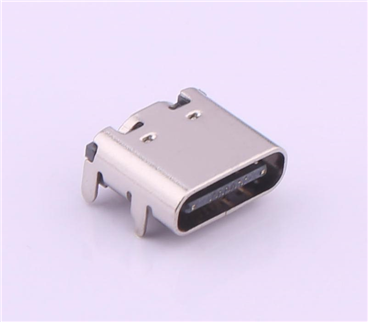
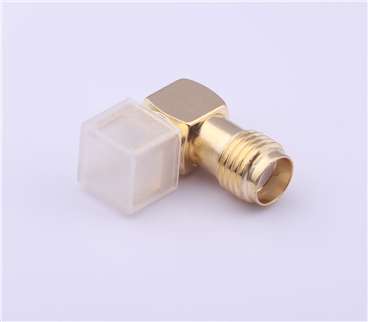
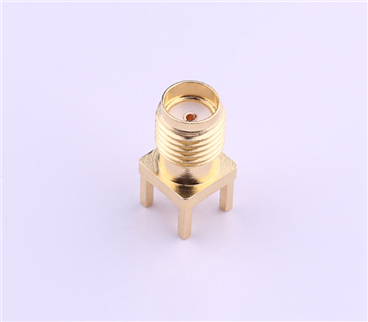
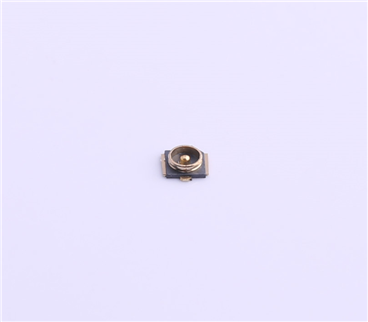
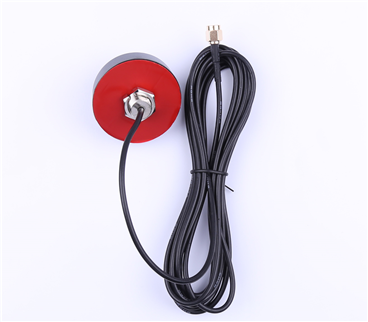
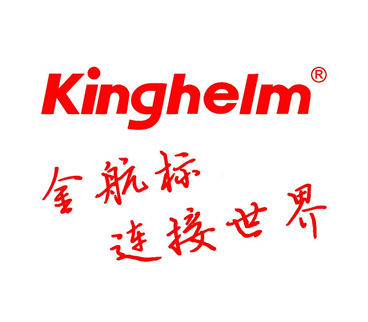





Copyright © Shenzhen Kinghelm Electronics Co., Ltd. all rights reservedYue ICP Bei No. 17113853
